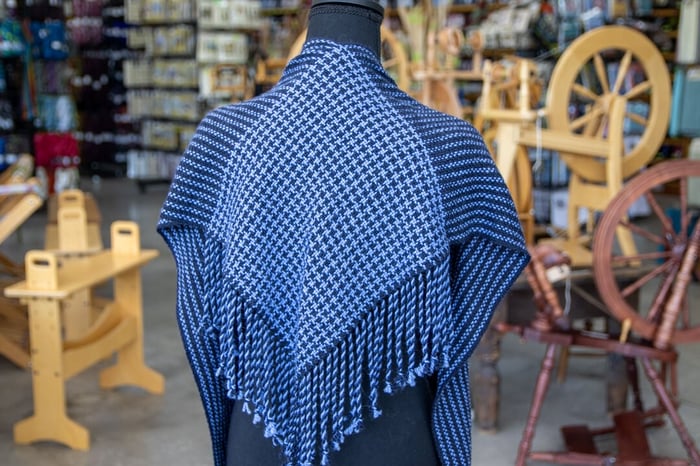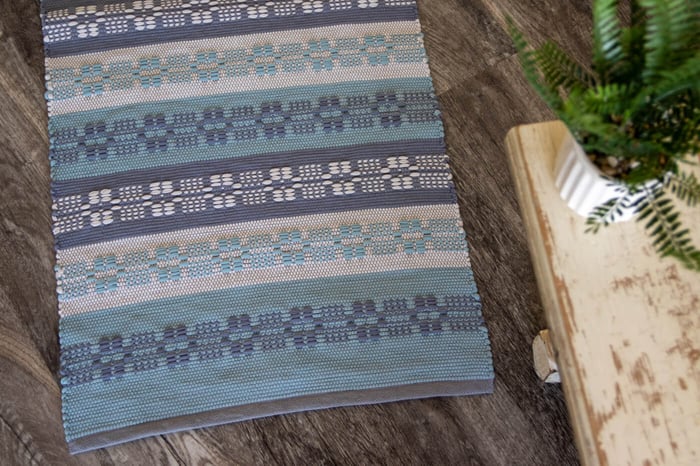Our Blog


How to Prepare Fleece for Spinning | Scouring Wool Fleece
Hand processing fleece isn't for everyone, but I think that it’s a vitally important activity in the handspinning community that everyone should participate in at least once. When we process our own wool, we’re not just learning a new skill, we’re also gaining a deeper understanding of how fiber type and preparation changes the kinds of yarns that we can spin. It opens a whole new world of possibilities that, if you’ve only ever spun commercially processed wools, you might be missing out on! There’s truly no feeling quite like holding a finished textile that you made entirely start to finish!
This year we brought in some beautiful natural colored Cormo. If you’ll indulge me, let me wax poetic for a bit on the humble Cormo! This sheep breed was introduced to the US in the 1970’s and originates in Australia. It is a cross between a Corriedale and a Merino, and comes in a range of colors from white to black. Their wool grows in boxy, grease heavy locks, and the crimp? Maximum poof. Top it off with an average micron count of 17-23 and you can see how it is well suited to luxurious next to skin garments. Truly, it's a breed that is worth trying! I mean, just look at this unparalleled fuzz!

If I’ve managed to convince you to process wool for the first time and you’re unsure how to proceed, here are two methods you can pursue:
To Process Loose Fiber:
You Will Need:
-Wool scour of your choice
-a three-part sifting litter box for cats (I prefer the Arm & Hammer Sifting Litter Pan, available at most pet stores)
-Absorbent bath towels
-An electric water boiler (optional, but helpful)
Getting Started:
1) Start by laying your fleece out tips-up and begin separating your locks into small groups. Locks like to stick to each other, so I like to grab 3-5 adjacent locks at once by the tip end, and pull them away from the larger mass. Take a quick moment to give the lock bundles a shake to get rid of second cuts.
2) Neatly arrange a single layer of locks in the sifter portion of the litter pan. It’s okay for them to be close, but take care not to overcrowd too much. I fit about 3-4 ounces of fleece in each batch I scoured using this method.
3) Run your tap as hot as it will go, and begin to fill one of the pans. Add as much scour as the manufacturer recommends by weight of dry fiber and agitate to disperse the soap. Lanolin softens completely at 185 degrees, so you may want to supplement with a pot of boiling water. (*OPTIONAL: doing a 1+ hour cold water soak before scouring will reduce much of the dirt on your fleece, as well as dissolve the suint. I also like to do cold soaks on white fleeces, as some environments have heavy iron content in the soil, which can stain a pristine white fleece a dingy cream!)
4) When the pan is 2/3 of the way full (about an inch from the lip of the pan), slowly lower the sifter pan into the scour bath. The locks will likely float; you can use a spoon (one not used for cooking) to gently encourage the locks below the surface. Sit the spare pan on the surface of the water to seal in the heat. DO NOT AGITATE!
5) After soaking for 10-15 minutes, remove the top pan then pull out the insert, letting it drain. You can place it in the additional pan while you dump the scour water to reduce messes. Rinse the fiber using the same method as steps 3- 4, but without the wool scour*.
6) Repeat steps 3-5 as needed (until rinse water runs clear). Lanolin heavy wool can be hard to scour fully, so you may need to repeat a few times.
7) Roll out a towel and dump the fiber directly onto it. Fold it over and press down to absorb the excess water. Leave out to dry on a dry towel or mesh drying rack.
*It is important to rinse in the same temperature water, or else the lanolin will re-solidify onto the wool. You can also felt fine wools with excessive agitation and repeated temperature shocks, so the less you fuss with it the better!
To Process Bagged Fiber
You Will Need:
-Wool scour of your choice
- A medium to large bucket (one with a lid is best)
-Small zippered mesh laundry bags
-Absorbent bath towels (or spin dryer)
-An electric water boiler (optional, but helpful)
Getting Started:
1) Follow steps 1-3 as written above, but instead of laying out locks in the pan, fill the laundry bags about ⅔ of the way full. The same rules apply: it’s okay for them to be close, but it needs to have room for water to circulate. It’s better to under-crowd than over-crowd.
4) Add enough bags to the bucket to fill it without overcrowding. The amount you can fill depends on the size of your bucket. If the bags float you can gently encourage them under with a stick or a spoon (one not used for food or cooking). Cover to seal in the heat.
5) After soaking for 10-15 minutes, pull out the bags and set aside, holding them up out of the water temporarily to let the water drain from them. DO NOT SQUEEZE!
6) Repeat steps 3-5 as needed until water runs clear.
7) There are a few ways you can remove excess water in this method. You can remove the wet locks and press the water out with a towel like above, or, you can put the bags in a spin dryer. A clothes washer that is able to run spin-cycle only will also work, but be careful to ensure that the fleece is very clean or you can risk clogging the pump.
So, now what? Well, that’s up to you! If you don’t have access to cards or combs don’t worry! Cormo is a fantastic wool to spin straight from the lock. If you want a worsted preparation, tease out both ends of a single lock and spin it off the tip of the lock. If you want a woolen preparation, tease out a single lock and spin it over the fold.


I hope I’ve inspired you to try something new on your fiber journey!
Featured Products
Dark Grey Cormo Fleece

$34.99
Dark Grey Cormo Fleece A very soft and fluffy wool fiber, excellent for spinning into fine lace weight yarn. Soft enough for clothing for babies....… read more
The Spinner's Book of Fleece

$29.95
The Spinner's Book of Fleece: A Breed-by-Breed Guide to Choosing and Spinning the Perfect Fiber for Every Purpose Author: Beth Smith The characteristics of fleece...… read more
The Field Guide to Fleece

$16.99
The Field Guide to Fleece Author: Deborah Robson and Carol Ekarius With this compact portable reference in hand, crafters can quickly and easily look up...… read more



